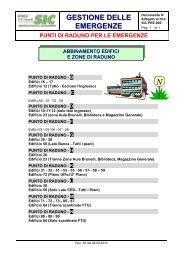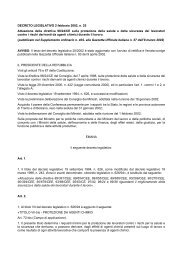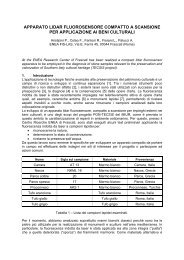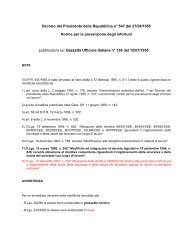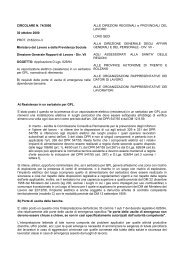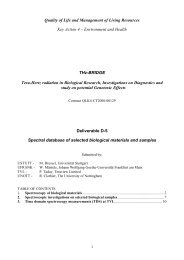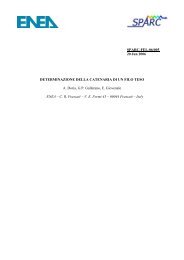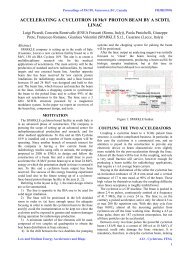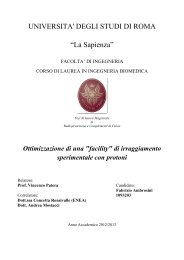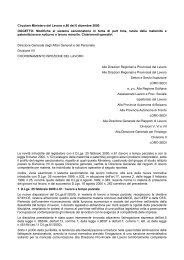Theory, Design and Tests on a Prototype Module of a Compact ...
Theory, Design and Tests on a Prototype Module of a Compact ...
Theory, Design and Tests on a Prototype Module of a Compact ...
Create successful ePaper yourself
Turn your PDF publications into a flip-book with our unique Google optimized e-Paper software.
<str<strong>on</strong>g>and</str<strong>on</strong>g> ε L,R<br />
p<br />
<br />
<br />
<br />
f<br />
∆x,εp=0<br />
= 0 ∀p.<br />
+<br />
N<br />
3. THE PERTURBED RESONANT FREQUENCY 57<br />
∂f<br />
<br />
<br />
<br />
ε<br />
p=1<br />
L p<br />
∂εL <br />
p <br />
∆x,εL p =0<br />
+<br />
N<br />
∂f<br />
<br />
<br />
<br />
ε<br />
p=1<br />
R p<br />
∂εR <br />
p <br />
∆x,εR p =0<br />
+ ∆x ∂f<br />
<br />
<br />
<br />
<br />
∂x<br />
∆x,εp=0<br />
= 0<br />
(4.47)<br />
The first term represents the imperturbed part that is zero. Let us<br />
remember the expressi<strong>on</strong> <strong>of</strong> the element (1, 2) <strong>of</strong> T N in the perturbed<br />
case<br />
N<br />
i=1<br />
Ti<br />
<br />
12<br />
= jωM {sinh x sinh Nx<br />
+<br />
N<br />
ε + p [sinh x sinh (N − 1)x + cosh x cosh (N − 1)x]<br />
p=1<br />
+ cosh x<br />
+ sinh x<br />
N<br />
ε + p cosh (2p − N − 1)x<br />
p=1<br />
N<br />
p=1<br />
ε − p sinh (N − 2p + 1)x<br />
<br />
(4.48)<br />
If <strong>on</strong>e deals with the derivative with respect to x <strong>of</strong> the previous expressi<strong>on</strong>,<br />
it is useless to c<strong>on</strong>sider more than the first term, because the<br />
others become zero when <strong>on</strong>e substitutes εp = 0 ∀p. In the following,<br />
using x = j π + ∆x, we can simplify<br />
2<br />
sinh x = j cosh ∆x<br />
sinh Nx = cos N π<br />
sinh N∆x<br />
2<br />
where we c<strong>on</strong>sider N as an even number, because we want to excite<br />
the π/2 mode. Then, it is valid that<br />
<str<strong>on</strong>g>and</str<strong>on</strong>g> therefore<br />
f(∆x) = −ωM cos N π<br />
cosh ∆x sinh N∆x,<br />
2<br />
<br />
∂f <br />
<br />
∂x<br />
x=jπ/2<br />
= −ωMN cos Nπ/2. (4.49)



